In this article
Maintaining your cat's oral health is critical for their overall wellbeing. Dental issues, including gingivitis and periodontal disease, are common in cats, and if left untreated, can progress to serious conditions that can affect more than just the mouth. It's crucial to identify and address dental health issues early on.
Here are some detailed signs and symptoms indicating that your cat might need dental care:
1. **Bad Breath**: Every cat has its unique breath odor. However, a significant change or particularly foul smell might be the first sign of oral disease, caused by bacteria accumulating in the mouth.
2. **Changes in Eating or Chewing Habits**: If your cat begins to eat less, avoids hard foods, or alters its chewing behavior (such as favoring one side), these changes might indicate oral discomfort or pain from dental issues.
3. **Drooling or Dropping Food from the Mouth**: Excessive drooling or saliva dripping from your cat's mouth might be a sign of dental disease. This could indicate difficulty chewing, pain, or an oral infection. If your cat drops food while eating, this might also point towards oral discomfort.
4. **Loss of Appetite or Weight Loss**: If your cat begins to eat less than usual or loses weight, these might be indicators of various health problems, including dental disease. Oral discomfort can make eating challenging, leading to a decrease in food intake and subsequent weight loss.
5. **Pawing at the Mouth or Face**: Cats may paw at their faces or mouths due to discomfort or pain, so this behavior might indicate the presence of dental problems.
6. **Visible Changes in the Mouth**: Changes in your cat's mouth, such as discolored (yellow or brown) teeth, inflamed or bleeding gums, visible tartar buildup, fractured or missing teeth, or sores in the mouth might indicate dental disease. If your cat has gingivitis, a common dental issue, the gums may appear red or inflamed, typically starting at the gum line and possibly spreading further. The gums might also appear swollen, bleed easily (especially when touched or during brushing), or even recede, making the teeth appear longer. Blood spots on a toothbrush or chew toy, or blood-tinged saliva when your cat yawns or opens its mouth wide can also be signs of gingivitis.
7. **Behavioral Changes**: Changes in your cat's behavior, such as becoming less social, appearing depressed, or becoming more irritable or aggressive, might indicate oral discomfort or disease.
If you observe any of these signs, it's important to schedule a visit with your vet, who can perform a full oral examination and, if necessary, a professional teeth cleaning under anesthesia.
To prevent dental disease, it's crucial to establish a regular at-home dental care routine. This should include:
1. Brushing your cat's teeth daily with a pet-friendly toothpaste.
2. Providing dental hygiene chews or toys to help clean your cat's teeth as they chew.
3. Using oral rinses or water additives recommended by your vet to help maintain oral hygiene.
Regular veterinary check-ups are an essential part of maintaining your cat's oral health and ensuring that potential issues are detected early. Remember, it's easier to prevent dental disease than to treat it. Despite the best preventative care, some cats may be more prone to dental disease due to factors such as breed, age, diet, and individual health conditions, making regular vet check-ups crucial for early detection and treatment.
Here are some detailed signs and symptoms indicating that your cat might need dental care:
1. **Bad Breath**: Every cat has its unique breath odor. However, a significant change or particularly foul smell might be the first sign of oral disease, caused by bacteria accumulating in the mouth.
2. **Changes in Eating or Chewing Habits**: If your cat begins to eat less, avoids hard foods, or alters its chewing behavior (such as favoring one side), these changes might indicate oral discomfort or pain from dental issues.
3. **Drooling or Dropping Food from the Mouth**: Excessive drooling or saliva dripping from your cat's mouth might be a sign of dental disease. This could indicate difficulty chewing, pain, or an oral infection. If your cat drops food while eating, this might also point towards oral discomfort.
4. **Loss of Appetite or Weight Loss**: If your cat begins to eat less than usual or loses weight, these might be indicators of various health problems, including dental disease. Oral discomfort can make eating challenging, leading to a decrease in food intake and subsequent weight loss.
5. **Pawing at the Mouth or Face**: Cats may paw at their faces or mouths due to discomfort or pain, so this behavior might indicate the presence of dental problems.
6. **Visible Changes in the Mouth**: Changes in your cat's mouth, such as discolored (yellow or brown) teeth, inflamed or bleeding gums, visible tartar buildup, fractured or missing teeth, or sores in the mouth might indicate dental disease. If your cat has gingivitis, a common dental issue, the gums may appear red or inflamed, typically starting at the gum line and possibly spreading further. The gums might also appear swollen, bleed easily (especially when touched or during brushing), or even recede, making the teeth appear longer. Blood spots on a toothbrush or chew toy, or blood-tinged saliva when your cat yawns or opens its mouth wide can also be signs of gingivitis.
7. **Behavioral Changes**: Changes in your cat's behavior, such as becoming less social, appearing depressed, or becoming more irritable or aggressive, might indicate oral discomfort or disease.
If you observe any of these signs, it's important to schedule a visit with your vet, who can perform a full oral examination and, if necessary, a professional teeth cleaning under anesthesia.
To prevent dental disease, it's crucial to establish a regular at-home dental care routine. This should include:
1. Brushing your cat's teeth daily with a pet-friendly toothpaste.
2. Providing dental hygiene chews or toys to help clean your cat's teeth as they chew.
3. Using oral rinses or water additives recommended by your vet to help maintain oral hygiene.
Regular veterinary check-ups are an essential part of maintaining your cat's oral health and ensuring that potential issues are detected early. Remember, it's easier to prevent dental disease than to treat it. Despite the best preventative care, some cats may be more prone to dental disease due to factors such as breed, age, diet, and individual health conditions, making regular vet check-ups crucial for early detection and treatment.










